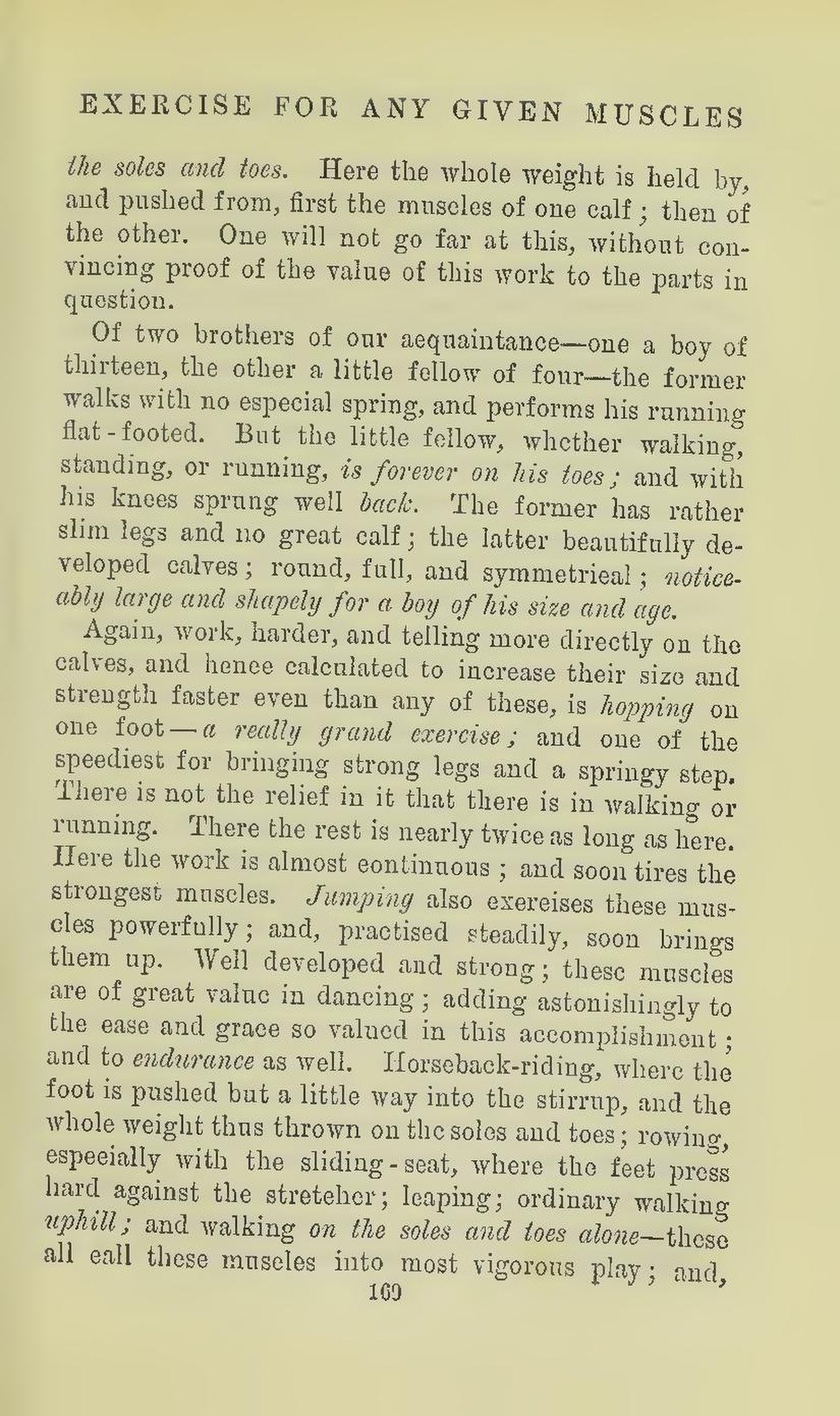EXERCISE FOR ANY GIVEN MUSCLES
the soles and toes. Here the whole weight is held by, and pushed from, first the muscles of one calf; then of the other. One will not go far at this, without convincing proof of the value of this work to the parts in question.
Of two brothers of our acquaintance—one a boy of thirteen, the other a little fellow of four—the former walks with no especial spring, and performs his running flat-footed. But the little fellow, whether walking, standing, or running, is forever on his toes; and with his knees sprung well back. The former has rather slim legs and no great calf; the latter beautifully developed calves; round, full, and symmetrical; noticeably large and shapely for a boy of his size and age.
Again, work, harder, and telling more directly on the calves, and hence calculated to increase their size and strength faster even than any of these, is hopping on one foot—a really grand exercise; and one of the speediest for bringing strong legs and a springy step. There is not the relief in it that there is in walking or running. There the rest is nearly twice as long as here. Here the work is almost continuous; and soon tires the strongest muscles. Jumping also exercises these muscles powerfully; and, practised steadily, soon brings them up. Well developed and strong; these muscles are of great value in dancing; adding astonishingly to the ease and grace so valued in this accomplishment; and to endurance as well. Horseback-riding, where the foot is pushed but a little way into the stirrup, and the whole weight thus thrown on the soles and toes; rowing, especially with the sliding-seat, where the feet press hard against the stretcher; leaping; ordinary walking uphill; and walking on the soles and toes alone—these all call these muscles into most vigorous play; and,
169
